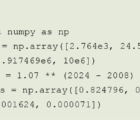
In a prior column, I mentioned some of the ways I used insurance principles in time management. Since then (perhaps as a result of having more time), I’ve come across a few more methods of saving time and, in a sense, money.
Avoiding a concentration of risks
Insurers like to spread risk and avoid concentrations of risk. Having only a single resource can cause problems if something happens to the availability of that resource. Often, the company’s information technology (IT) department is the only source for the data we use, and there is little we can do about that issue. At several companies, I established a “data extraction” team within the actuarial department that was able to directly get the data we needed, without IT’s involvement. We still had a single source for our data, but we controlled it.
Prudent manufacturers have an alternate supplier for their parts and materials. Some buildings have a second power source in the event that their primary one fails. Similarly, I prefer to have a secondary vendor, already vetted, for crucial functions. This often comes in the form of two or more individuals who can perform a critical task, or critical software installed on multiple machines to prevent a crash from shutting down a critical activity.
I learned the hard way to never have only one person who can do an important task. ALWAYS have a backup, if for nothing else than to review the first person’s work. You have a power backup and a data backup for your computer — why not a backup for people doing critical tasks?
Business interruption
Prevention is a great form of loss control. My loss prevention involves keeping my antivirus and other cyber protection tools updated. But there are personal “business interruption” events as well:
You get called for jury duty.
You get sick.
Your kid gets sick.
Your coworker gets sick.
Your IT department has a rush job that delays your data.
Your office has a fire.
Your town is affected by severe weather (hurricane, tornado or flood).
I learned the hard way to never have only one person who can do an important task. ALWAYS have a backup, if for nothing else than to review the first person’s work.
With perhaps the exception of an office fire, these events are beyond your control. Building some slack into timelines to account for such potential events can help you meet a deadline, but it is not always possible. Being able to work through an interruption by working remotely, for example, is another means of handling such an event.
Scheduling routine maintenance items, such as replacing the batteries in your smoke detectors, enables you to do the maintenance on your schedule — not in the middle of the night when one of them starts chirping. (Or when you are out of town and your spouse can’t reach the one that goes off. See “How Documentation Saved Me,” my IMO in Actuarial Review September-October 2017.)
Life seems to have its interruptions, and you can’t predict them. You can handle routine maintenance tasks when you have some slack in your schedule, so such interruptions will have less of an impact on your deadlines.
Business resumption
The business resumption function in the companies that I worked for had a lot of responsibilities. All of the individuals on the resumption team, as well as their backups, had manuals outlining their duties. I like to keep a similar manual for my personal work, with to-do items like regularly backing up my electronic files.
In those situations when your work stops, there needs to be a means of “re-starting” the project: a business resumption plan.
We can apply business resumption techniques to projects as well. Knowing I’ll likely be doing the same analysis next quarter or next year, my documentation works like a “business resumption” plan. An actuarial report goes a long way to provide the business resumption documentation I need to restart the project a quarter or year later, but some items, written like a cookbook, complete with ingredients and steps, can make it easier. Instead of “Preheat oven to 350 F,” it’s “Request report XYZ from IT one week following the close of the quarter’s books” as the first step in the actuarial analysis.
In those situations when your work stops, there needs to be a means of “re-starting” the project: a business resumption plan. We all stop working every day, only to pick it back up the next day or after the weekend. At the end of the day, I tend to write up a to-do list for the next workday — a sort of business resumption list. Occasionally a project will pause for days, weeks, or even months. (I am awaiting additional data on one of my projects from a client as I write this. Hopefully, I have documented the project well enough that I can pick up where I left off, with minimal effort, when I get the data.)
Think of your routine rate and reserve work — once it is done, it doesn’t happen again until the next month, or quarter, or even a year or more. You have completed the task, but it will recur, so it is similar to an interrupted project waiting for data. If you think of it as an “interrupted project,” it has a different meaning and a different approach. Again, proper documentation will do wonders for your ability to pick up the task.
Reinsurance
There are times that a company can successfully and profitably write more business, but financial restrictions keep it from doing so. In such instances, reinsurance can provide the needed extra capacity. Just like reinsurance can help the company handle capacity and volume issues, consultants and other services can operate to manage work capacity needs. Just don’t forget that, like reinsurance, not all of the burden gets passed on to the consultant. There is some work you need to do to make the engagement successful.
Now it’s your turn. What insurance and risk management techniques can you apply to your own time management?











